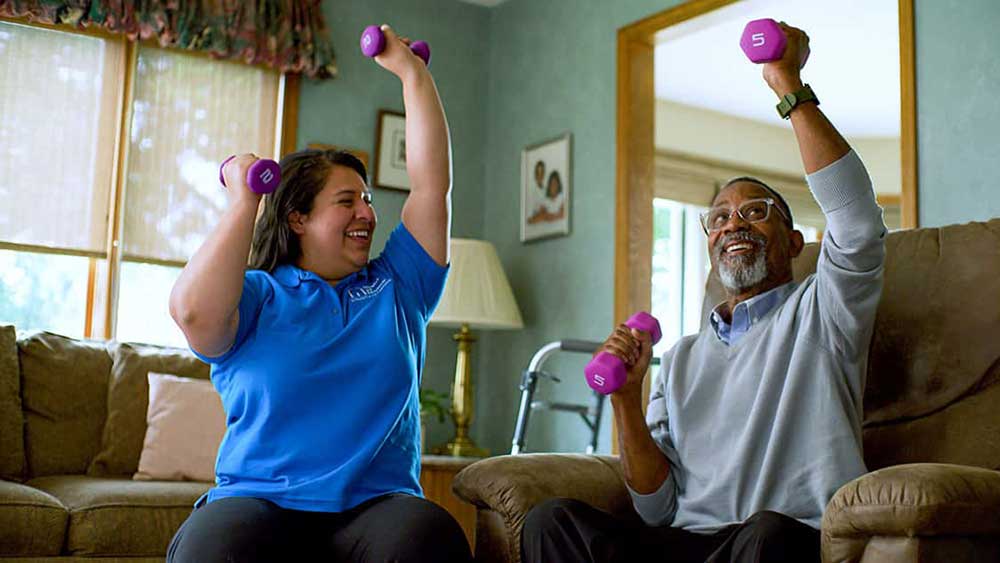

5 Myths About Parkinson’s Disease
In 1998, Michael J. Fox shocked the world when he publicly announced that he has Parkinson’s disease (PD). Perhaps even more shocking? The beloved actor had had the disease for over seven years before sharing the news with the public. Fox has been open about what he has been experiencing since receiving the diagnosis, and he has become a patient advocate for curing PD.
While Fox and organizations like the Parkinson’s Foundation make an effort to educate people about Parkinson’s disease year-round, April is Parkinson’s Awareness Month, which aims to shine a brighter spotlight on the neurodegenerative disease. In honor of Parkinson’s Awareness Month, we’ve identified some of the most common myths to help you better understand the disease:
#1: Everyone With Parkinson’s Disease Has Tremors
Tremor is probably the most notable symptom of PD, but it is not the only symptom people experience when living with the disease. According to the Parkinson’s Foundation, many symptoms of PD are nonmotor, or “invisible symptoms.” These can include changes or limitations to your sense of smell, sleep disturbances, constipation, bladder issues, cognitive changes, excessive sweating, pain in one or more limbs, lightheadedness, and even anxiety or depression. It’s quite possible for someone living with PD to have these nonmotor symptoms in lieu of tremors.
#2: Parkinson’s Disease Only Occurs in the Elderly
While Parkinson’s is diagnosed at an average age of 60, the disease can affect younger people as well. According to Johns Hopkins Medicine, young-onset Parkinson’s disease (YOPD) applies to anyone under age 50 (like Fox, who was age 29 when his PD was diagnosed). People with YOPD can experience stiffness or cramping in their muscles as an early symptom, along with exhibiting involuntary body movements.
#3: Aside From Medication, There’s Nothing You Can Do to Control It
Although medication can be very effective in managing the symptoms of PD, it’s not the only way to keep PD at bay. There are plenty of lifestyle changes those living with PD can adopt in order to improve their quality of life. The American Parkinson Disease Association recommends regular exercise and a diet that includes fruits and vegetables high in antioxidants. Research has shown that there are benefits to “regular exercise routines of walking, strength training, or Tai Chi,” as well as noncontact boxing to improve mobility, balance and coordination.
#4: Parkinson’s Disease Can Only Be Managed by a Neurologist
There have been multiple studies that have shown that most people living with PD don’t need it to be managed regularly by a neurologist. A study published by researchers at Mayo Clinic found that primary care physicians should feel comfortable managing PD, which is “especially relevant in communities where neurologists are in short supply and appointments are hard to come by.”
#5: If Someone With Parkinson’s Looks Good, They Must Feel Good
Unfortunately, we can never understand the potential pain and discomfort that someone might be living with based on their appearance. As the Parkinson’s Foundation points out, medications that people take for PD can wear off between doses, so even if symptoms are kept to a minimum, how they are feeling and processing the medication roller coaster might not be visible to the public. And even if their medication can keep the tremors at bay, those experiencing nonmotor symptoms of PD still may not feel well even though they don’t “look sick.”
How In-Home Care Can Help
Living with chronic illness is not easy, but with the right medical interventions, proper lifestyle adjustments, and some additional support at home, living a fulfilling, happy life is possible. A professional in-home caregiver from Right at Home can help with physical assistance, medication reminders, transportation, meal preparation and more. Contact your nearest Right at Home location for more information.
Health and Safety Resources for Seniors
Featured Article








